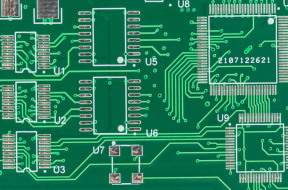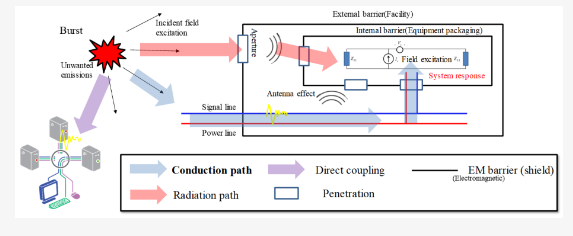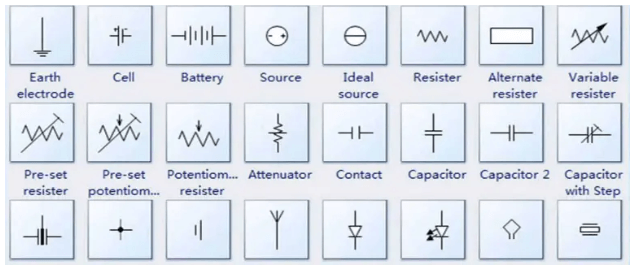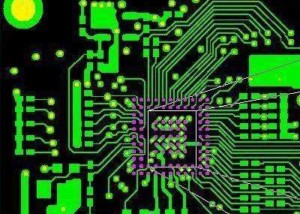Best circuit board
Top 10 Circuit Boards for DIY Electronics Projects
When embarking on DIY electronics projects, selecting the right circuit board is crucial for both the functionality and success of your endeavor.
The market offers a plethora of options, each with unique features and benefits tailored to various applications. To assist you in making an informed decision, we have compiled a list of the top 10 circuit boards that stand out for their quality, versatility, and ease of use.
First on our list is the Arduino Uno, a staple in the DIY electronics community.
Known for its user-friendly interface and extensive online support, the Arduino Uno is ideal for beginners and seasoned hobbyists alike. Its open-source nature allows for a wide range of applications, from simple LED projects to more complex robotics.
Transitioning to another popular choice, the Raspberry Pi 4 Model B offers a more powerful alternative.
This single-board computer is equipped with a quad-core processor, making it suitable for projects that require more computational power. Its versatility extends to applications in home automation, media centers, and even small-scale servers.
Next, we have the BeagleBone Black, which provides a balance between the simplicity of the Arduino and the power of the Raspberry Pi. With its robust processing capabilities and extensive I/O options, the BeagleBone Black is perfect for projects that demand real-time processing and high-speed data acquisition.
For those interested in wearable technology, the Adafruit FLORA is an excellent choice.
This compact, round circuit board is designed specifically for e-textiles and wearable projects. Its small size and flexibility make it easy to integrate into clothing and accessories, opening up a world of creative possibilities.
Moving on, the ESP8266 NodeMCU is a standout for IoT enthusiasts.
This low-cost Wi-Fi-enabled board allows for easy integration of internet connectivity into your projects. Its compatibility with the Arduino IDE further simplifies the development process, making it a favorite among DIYers looking to create smart home devices.
Another noteworthy mention is the Teensy 4.0, which offers unparalleled speed and performance in a compact form factor. With its ARM Cortex-M7 processor, the Teensy 4.0 is capable of handling demanding tasks such as audio processing and real-time data analysis. Its extensive library support also ensures that you have the tools needed to bring your projects to life.
For those who prioritize modularity, the Seeed Studio Grove Beginner Kit is an excellent option.
This kit includes a base shield and a variety of plug-and-play modules, allowing for quick and easy prototyping. The Grove system’s standardized connectors eliminate the need for soldering, making it accessible to beginners.
The Particle Photon is another top contender, particularly for cloud-connected projects. This tiny Wi-Fi development board comes with built-in cloud support, enabling seamless integration with web services and remote control capabilities. Its robust ecosystem and community support make it a reliable choice for IoT applications.
Additionally, the Adafruit Metro 328 offers a familiar form factor for those accustomed to the Arduino Uno but with added features such as a USB-C connector and improved power management. This board is ideal for projects that require a bit more power and flexibility without deviating from the Arduino ecosystem.
Finally, the SparkFun RedBoard stands out for its reliability and ease of use. Compatible with the Arduino IDE, the RedBoard offers a straightforward development experience with the added benefit of a more robust USB interface. Its durable design ensures that it can withstand the rigors of repeated use, making it a dependable choice for a wide range of projects.
In conclusion, the selection of the right circuit board can significantly impact the success of your DIY electronics projects. Whether you are a beginner or an experienced hobbyist, the options listed above provide a variety of features and capabilities to suit your specific needs. By carefully considering the unique attributes of each board, you can ensure that your projects are both innovative and functional.

How to Choose the Best Circuit Board for Your Needs
Selecting the best circuit board for your needs is a critical decision that can significantly impact the performance, reliability, and cost-effectiveness of your electronic project.
To make an informed choice, it is essential to consider several key factors, including the type of circuit board, material composition, manufacturing quality, and specific application requirements. By understanding these elements, you can ensure that your circuit board meets the necessary standards and functions optimally within your design.
First and foremost, it is important to identify the type of circuit board that aligns with your project’s requirements.
The most common types include single-sided, double-sided, and multi-layered boards. Single-sided boards, which have components on only one side, are typically used for simpler, low-cost applications. Double-sided boards, with components on both sides, offer greater complexity and are suitable for more advanced projects. Multi-layered boards, consisting of multiple layers of circuitry, provide the highest level of complexity and are ideal for sophisticated electronic devices requiring compact and high-density designs.
In addition to the type of circuit board, the material composition plays a crucial role in determining its performance and durability.
The most widely used material is FR-4, a composite of woven fiberglass cloth with an epoxy resin binder that is flame resistant. FR-4 is favored for its excellent mechanical strength, electrical insulation properties, and cost-effectiveness.
However, for high-frequency applications, materials such as Rogers or Teflon may be more appropriate due to their superior dielectric properties and lower signal loss. It is essential to match the material to the specific electrical and thermal requirements of your project to ensure optimal performance.
Manufacturing quality is another critical factor to consider when choosing a circuit board.
High-quality manufacturing processes ensure that the board is free from defects such as shorts, opens, or misalignments, which can compromise the functionality and reliability of the final product. It is advisable to select a reputable manufacturer with a proven track record of producing high-quality circuit boards. Additionally, certifications such as ISO 9001 or IPC standards can provide assurance of the manufacturer’s commitment to quality and consistency.
Furthermore, the specific application requirements of your project should guide your choice of circuit board. For instance, if your project involves high-power components, it is essential to select a board with adequate thermal management capabilities to dissipate heat effectively.
Similarly, for applications requiring high-speed signal transmission, a board with low signal loss and minimal electromagnetic interference is crucial. Understanding the unique demands of your project will help you select a circuit board that meets these requirements and ensures reliable performance.
In conclusion, choosing the best circuit board for your needs involves a careful evaluation of several factors, including the type of board, material composition, manufacturing quality, and specific application requirements. By considering these elements and selecting a board that aligns with your project’s demands, you can achieve optimal performance, reliability, and cost-effectiveness. Making an informed decision in this regard is essential for the success of your electronic project and can significantly impact its overall functionality and longevity.
Comparing the Best Circuit Boards for Robotics
When delving into the world of robotics, selecting the best circuit board is a critical decision that can significantly impact the performance and capabilities of your project. Circuit boards serve as the backbone of any robotic system, providing the necessary infrastructure for electrical connections and component integration.
Among the myriad of options available, three circuit boards stand out for their unique features and suitability for various robotic applications: the Arduino Uno, the Raspberry Pi, and the BeagleBone Black.
The Arduino Uno is often the first choice for beginners and hobbyists due to its simplicity and ease of use.
This microcontroller board, based on the ATmega328P, offers a straightforward platform for developing basic to intermediate robotic projects. Its open-source nature allows for extensive community support, making it easier to find tutorials, libraries, and troubleshooting advice.
The Arduino Uno’s digital and analog input/output pins enable seamless integration with sensors, actuators, and other peripherals, facilitating the creation of responsive and interactive robots. However, its limited processing power and memory may constrain more complex applications, necessitating a more advanced solution for sophisticated projects.
Transitioning to a more powerful option, the Raspberry Pi provides a significant upgrade in terms of computational capabilities.
Unlike the Arduino Uno, the Raspberry Pi is a full-fledged single-board computer, capable of running a Linux-based operating system.
This versatility allows for the execution of more complex algorithms and the handling of intensive tasks such as image processing and machine learning.
The Raspberry Pi’s extensive GPIO (General Purpose Input/Output) pins offer flexibility in connecting various components, while its multiple USB ports and HDMI output facilitate the integration of peripherals like cameras and displays.
Despite its advantages, the Raspberry Pi’s complexity may pose a steeper learning curve for beginners, and its reliance on an operating system can introduce latency issues in time-sensitive applications.
For those seeking a balance between the simplicity of the Arduino Uno and the power of the Raspberry Pi, the BeagleBone Black emerges as a compelling choice. This single-board computer, powered by the AM335x 1GHz ARM Cortex-A8 processor, offers robust performance while maintaining a relatively user-friendly interface.
The BeagleBone Black’s PRU (Programmable Real-time Unit) subsystem provides real-time processing capabilities, making it ideal for applications requiring precise timing and control. Additionally, its extensive I/O options, including analog inputs and PWM (Pulse Width Modulation) outputs, enable versatile interfacing with a wide range of sensors and actuators. The BeagleBone Black’s compatibility with various development environments and its strong community support further enhance its appeal for both novice and experienced roboticists.
In conclusion, the choice of the best circuit board for robotics depends largely on the specific requirements and goals of your project. The Arduino Uno offers an accessible entry point for beginners, while the Raspberry Pi provides the computational power needed for advanced applications.
The BeagleBone Black strikes a balance between these two, offering robust performance with real-time processing capabilities. By carefully considering the strengths and limitations of each option, you can select the circuit board that best aligns with your project’s needs, ensuring a solid foundation for your robotic endeavors.
The Best Circuit Boards for High-Frequency Applications
When it comes to high-frequency applications, the selection of the best circuit boards is paramount to ensure optimal performance and reliability. High-frequency circuits, often operating in the gigahertz range, are integral to various advanced technologies, including telecommunications, radar systems, and high-speed data processing.
The unique demands of these applications necessitate circuit boards that can handle high-speed signals with minimal loss and interference. Consequently, several key factors must be considered when choosing the best circuit boards for high-frequency applications.
First and foremost, the material composition of the circuit board plays a crucial role.
Traditional FR-4 materials, commonly used in standard circuit boards, are often inadequate for high-frequency applications due to their higher dielectric losses and limited thermal stability. Instead, materials such as Rogers, Taconic, and PTFE (Polytetrafluoroethylene) are preferred. These materials offer lower dielectric constants and dissipation factors, which are essential for maintaining signal integrity at high frequencies. Additionally, they exhibit superior thermal properties, ensuring that the circuit board can withstand the heat generated by high-speed operations without degrading.
Another critical aspect to consider is the design and layout of the circuit board.
High-frequency signals are highly susceptible to electromagnetic interference (EMI) and crosstalk, which can significantly degrade performance. To mitigate these issues, careful attention must be paid to the spacing and routing of traces. Utilizing techniques such as controlled impedance routing, differential pair routing, and proper grounding can help minimize signal loss and interference. Moreover, the use of via stitching and ground planes can further enhance the board’s ability to manage high-frequency signals effectively.
The choice of surface finish is also a vital consideration for high-frequency circuit boards.
Surface finishes such as Electroless Nickel Immersion Gold (ENIG) and Immersion Silver are often preferred over traditional Hot Air Solder Leveling (HASL) due to their superior flatness and lower contact resistance. These finishes provide a more consistent and reliable surface for high-frequency signal transmission, reducing the risk of signal degradation.
Furthermore, the manufacturing precision of the circuit board is of utmost importance.
High-frequency applications demand tight tolerances and precise fabrication to ensure that the board’s physical dimensions and electrical properties align with the design specifications. Advanced manufacturing techniques, such as laser direct imaging (LDI) and automated optical inspection (AOI), are employed to achieve the necessary precision and quality control. These techniques help in producing circuit boards with minimal defects and variations, which is crucial for maintaining high-frequency performance.
In addition to material and design considerations, the testing and validation of high-frequency circuit boards are essential to ensure their suitability for the intended application.
Techniques such as Time Domain Reflectometry (TDR) and Vector Network Analysis (VNA) are commonly used to evaluate the board’s performance in terms of signal integrity, impedance matching, and overall electrical characteristics. These testing methods provide valuable insights into the board’s behavior under high-frequency conditions, allowing for necessary adjustments and optimizations.
In conclusion, selecting the best circuit boards for high-frequency applications involves a comprehensive evaluation of material properties, design strategies, surface finishes, manufacturing precision, and rigorous testing. By prioritizing these factors, engineers and designers can ensure that their high-frequency circuits achieve the desired performance and reliability. As technology continues to advance, the demand for high-frequency applications will only grow, making the choice of the right circuit board more critical than ever.






